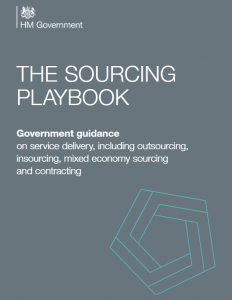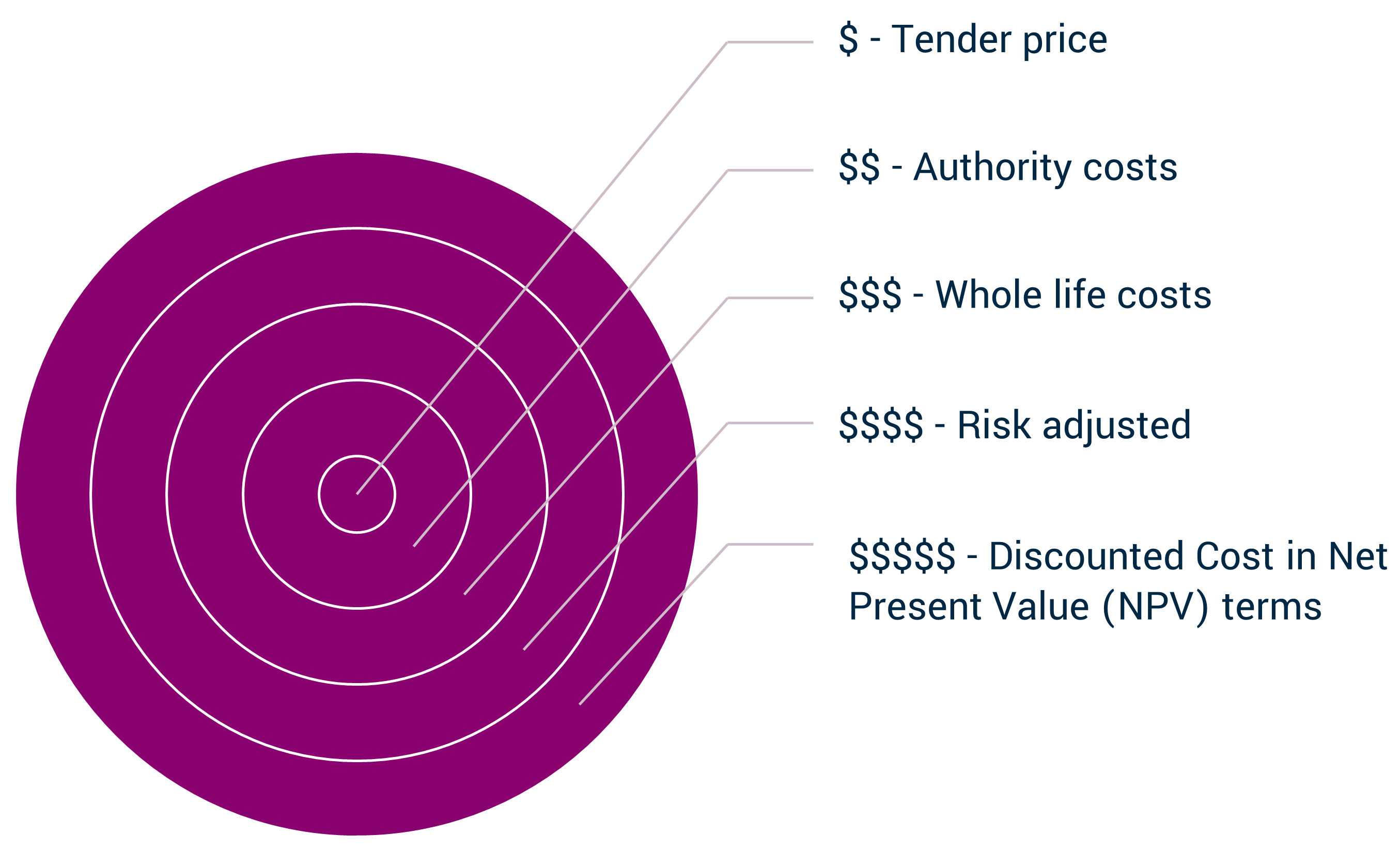Complex procurements can often feel like a minefield with much to consider and many ways to inadvertently get it wrong. With a track record of delivering over 20,000 successful projects since 2001, our team of experts here at Commerce Decisions can offer all the support you may need.
In this blog, we’ll share some of our top tips for planning and managing this particular type of procurement – feel free to bookmark this as a handy reference guide ahead of your next large-scale project.
The blog summarises our recent ‘How to Successfully Manage Complex Procurements’ webinar, which provides further detail and advice direct from one of our experts. You can watch the recording by completing the form at the bottom of this page.
Quick links
What are complex procurements?
Before we share our tips, let’s confirm what we mean by ‘complex procurement’. Complex procurements consist of many different, connected parts. The government’s ‘Sourcing Playbook’ defines the process as:
- First-generation outsourcing
- Significant transformation of service delivery
- Obtaining service from markets with limited competition or where the government is the only customer; and,
- Any service obtained by contract that is considered novel or contentious
In order to successfully get to contract award, you’ll need to apply complex evaluation design methods. A wide range of stakeholders, the potential for big compromises that could have significant impacts and the huge sums of money all make for a high-risk process.

What is the difference between simple and complex procurement?
A simple procurement is straightforward. You know what you want. You know it exists. You’ve probably bought it many times before. You may be able to execute a simple procurement with a single person managing the process.
Whereas, with a complex procurement, you’ll know what it is you want to achieve, but there may be many different ways to get there. And some will likely be better than others.
In this situation, you’ll specify the ultimate outcome, but it is up to your bidders to work out how their product or service can provide the solution.
To effectively evaluate bidder submissions, you’ll almost definitely need a large team of suitably qualified and experienced people. This is where Commerce Decisions and our AWARD® Solution come in.
Why are complex procurements high-risk?
When complex procurements go wrong, it’s going to cost you time, money, resource and potentially reputation. Complex procurement processes are often worth hundreds of millions of pounds, or involve high profile organisations, so the risks to weigh up and mitigate are not insignificant.
With this in mind, you’ll have far greater scrutiny from various internal departments, as well as the external threat of legal challenge and bad press if large amounts of taxpayers’ money are judged to have been spent badly. All involved parties will need complete confidence that the process you’re following will result in a successful contract award, and be protected from challenge.
Risk comes in many forms beyond the obvious large monetary outlay. You may be tempted to put too much focus on technical requirements, or to make too many of your chosen criteria a mandatory pass or fail.
Successfully managing complex procurements
Whilst both simple and complex procurement endeavours will follow a four-stage process that we refer to as a roadmap, the level of effort, time and expense required at each step greatly varies.
Each stage includes multiple steps, and the level of effort, time and expense will vary depending on which type of procurement you’re undertaking.
The roadmap for a simple procurement would have basic steps within each stage would be basic and generally more prescriptive. Your biggest value for money consideration may be to pick the cheapest compliant solution and your procurement officer may sift through a handful of bids before awarding the contract.
A complex procurement roadmap on the other hand, is more detailed. You’ll need to take several extra steps within each stage, spending more time and generally taking more care over your decisions. Naturally, you’ll handle more data, and the required documentation will be far more intense.
Let’s take a deep dive into four of the most important considerations within a complex procurement.

1) Develop structured criteria
One of the earliest steps within a complex procurement is ‘structured criteria development’. Here, you’ll need to look at the goals, benefits, enablers, and dependencies of the programme to work out what you are trying to achieve and what needs to be resolved in order to proceed. You’ll then set criteria for bidders to meet based on the outcome of this discovery phase.
You can learn more in the recording of our ‘How to Successfully Manage Complex Procurements’ webinar session – access via the form at the bottom of this page.
2) Create robust weighting
Applying a meaningful set of ‘weights’ to your criteria allows you to assess your tender bids in a fair and defensible way. Rather than looking at every criterion as equal, weighting (determined at the beginning of the project) assigns a unique proportion of the final score to each criteria set.
When defining your weights, you’ll need to determine what makes one factor more important than another and define why it needs to be emphasised.

Working against bias
The purpose of applying a weighting system is, in part, an effort to remove the bias we naturally apply as humans. We often consider ourselves to be very good at making judgments around things like comparisons. But the reality is that our decisions are often impacted by a number of issues, especially when we work collectively. Any one or all of the following could come into play, making it very difficult for all parties involved to unanimously determine the best outcome.
- Confirmation bias – reverse engineering
- Optimism bias – hoping for the best!
- Underfitting – looking for too simple an answer
- Confounding variables – making a link between data that isn’t really there
- Situational factors – group dynamics that hold influence
A good weighting approach acknowledges and respects the challenges of getting humans to agree.
The 4-Factor Weighting Method for complex procurements
At Commerce Decisions, we’ve developed a weighting method that is both objective and defensible and takes into account all of those human dynamics to reduce them to an absolute minimum.
We call it ‘The 4-Factor Weighting Method’. You do this by taking each criteria independently and then looking at it in terms of its influence on the outcome of the project, based on:
- Impact
- Distinctive capability
- Certainty
- Immediacy
You then calculate the relative weight for each of the criteria by combining the assessment of all of those factors.
An overview of our 4-Factor Weighting Method is available in the webinar recording (access below).
3) Establish an audit trail
The key with a complex procurement is to document what you intend to do. And then do it exactly as you said you would, with evidence of your process.
You will need to make sure that you have an audit trail of every decision that you made, so that you can demonstrably show that you were fair in your process. This will also help you to avoid legal challenges, should your project come under scrutiny.
It’s not always easy to keep track of your decision-making process but using our solution AWARD® will generate a robust audit trail that can save you time whilst ensuring accuracy and compliance.
4) Evaluate the cost
When looking at cost, the most important figure you’ll need to consider is the ‘evaluated cost’. This is defined as the price given by the bidder along with lots of other units of measure where needed. It can include adjustments to account for risk or pricing maturity.

This illustrates how to arrive at the evaluated cost.
- Starting in the centre of the bullseye with the tender price – What is it and will we make the decision based off this alone?
- Most likely not. So, move to the next circle and include the Buying Authority costs – What will you need to spend in order to deploy the product/service?
- The next ring considers whole life costs – How much will the product/service cost to run over time, and then ultimately decommission and dispose of?
- You may add some risk adjustment in relation to temporal aspects.
- Finally, consider the cost of or changes to inflation.
Evaluating value for money
The aim of a procurement competition is to select the Most Economically Advantageous Tender (MEAT). This is a result of how you combine all of those various elements – tender price, cost, technical aspects, compliance, risk, etc. You’ll need to demonstrate that you achieved Value for Money (VfM) when you made your selection.
Achieving VfM is far more complex with a strategic project – there are many factors beyond monetary cost which will determine if a solution is truly going to deliver real value. You’ll need to balance cost and quality, as well as determining both technical and financial value. Which method you use to obtain the MEAT will drive different behaviours from your bidders, and ultimately affect your overall outcome. This must all be taken into account to ensure you get the results you are expecting. This is where our Real Value for Money (RVfM) module can help – part of the AWARD® platform functionality.

Your complex procurement checklist:
As you plan your project, you’ll need to produce the following two documents to publicly show that you’re approaching your procurement in the best, fairest and most unbiased way (this applies to public and regulated organisations only, but represents best practice across all sectors). The documents require you to assess all of those steps that we’ve discussed above (and more!) in great detail, so you will have had to have a clear, robust process to get to this point.
- A tender evaluation strategy that has to be published to the market. This will include information around:
- How you’re going to score and rank the tenders
- How you’re going to deal with cost
- What your award criteria are
- How they’re weighted
- How the life cycle costs are going to be taken into account
- A tender evaluation plan (not publishable, but disclosable in a legal challenge) This outlines:
- How you’ll run an effective tender evaluation
- Responsibilities, non-disclosure agreements
- How you’ll handle conflicts of interest etc.
- The right tools
If you’re using the wrong tools to manage your complex procurements, you’re introducing risk and uncertainty, and ultimately affecting your ability to achieve the best possible outcomes.
Ensure you are utilising a robust solution that provides support and expertise from day one. Our own, innovative software solution, AWARD® does exactly this.
The tips above have given you a short overview of the intricate process involved in completing large-scale procurements and have likely demonstrated why it’s important to plan ahead when running a high profile, high value, high-risk programme. You may also wish to take a look at some of our support offerings and tailored packages of support, especially curated to guide you through each stage of a complex procurement process.
To benefit from a deeper understanding, we’d recommend that you watch our 30-minute ‘How to Successfully Manage Complex Procurements’ webinar, where our consultants draw on their 20+ years of experience to share real-life case studies and additional advice.
Simply complete the form below to access the recording.
About AWARD®
Complex projects require an entirely different focus to tactical, operational purchases. The technology supporting them needs a flexibility, transparency and depth that is not offered by sourcing tools or spreadsheets.
Trusted with many of the world’s most important procurements, AWARD® is a flexible and scalable software solution specifically designed to deliver the best possible outcomes. AWARD® provides expert support and thought leadership as you navigate the particular challenges of high-risk, high value, strategic procurements.
Deploy AWARD® as a standalone solution on a one-off project/programme basis or use alongside your preferred e-sourcing platform for a fully integrated, end-to-end complex procurement process.



